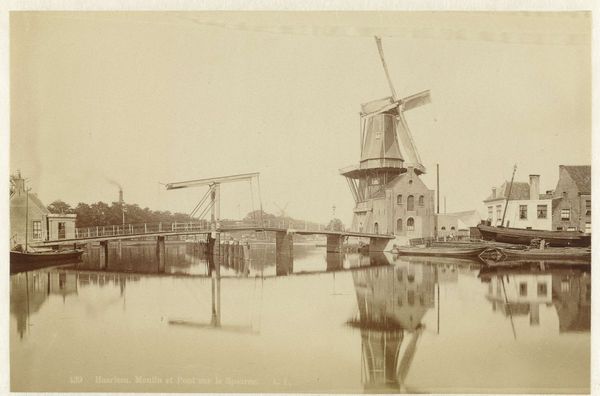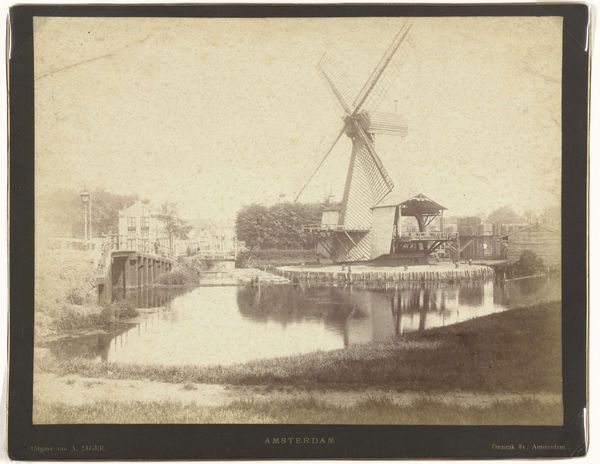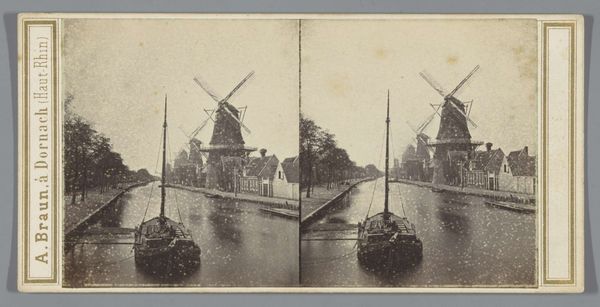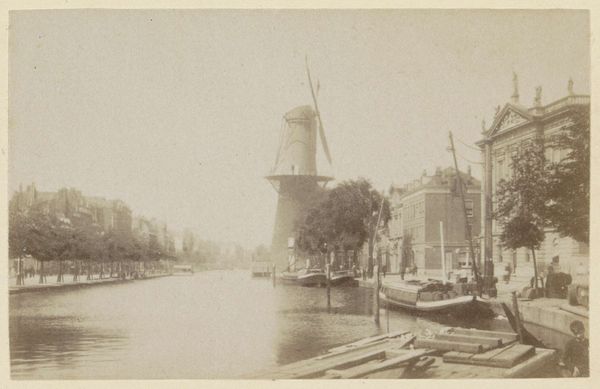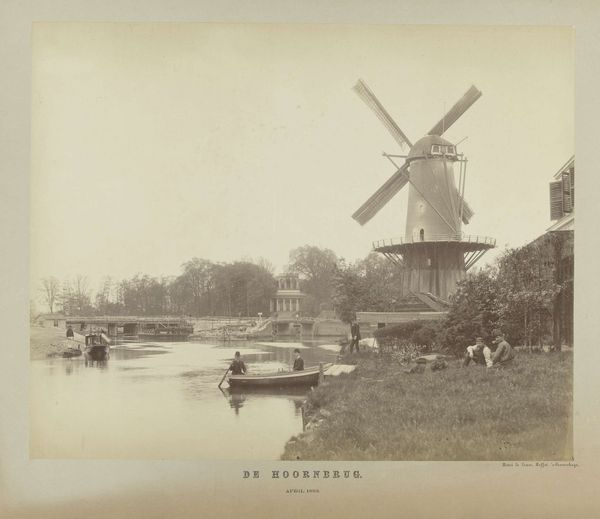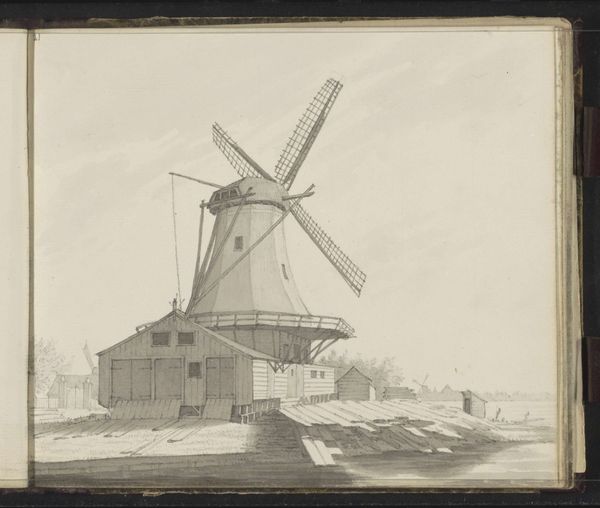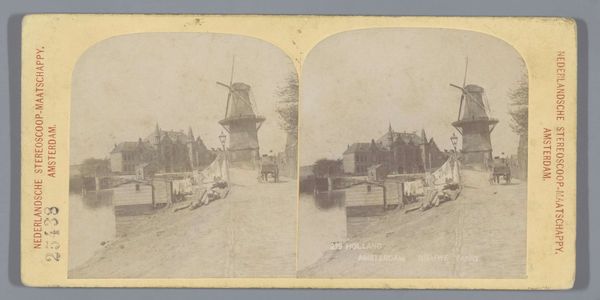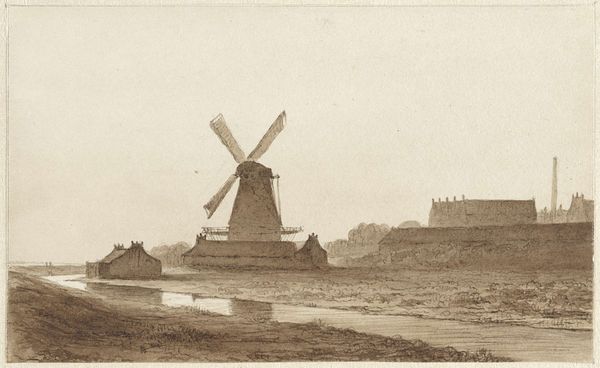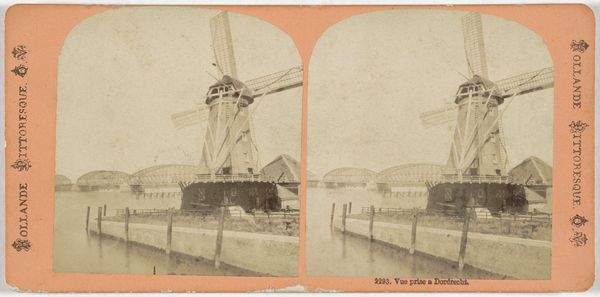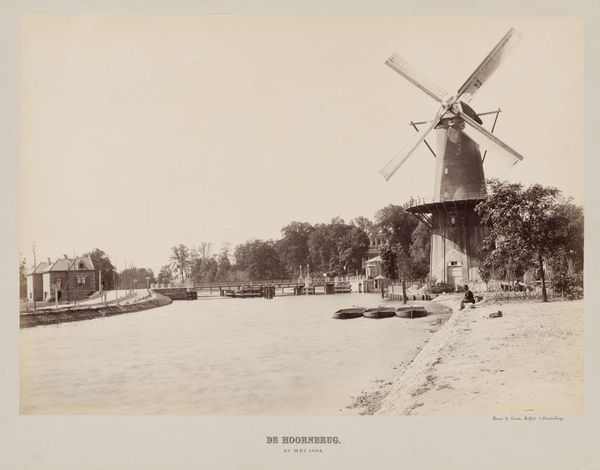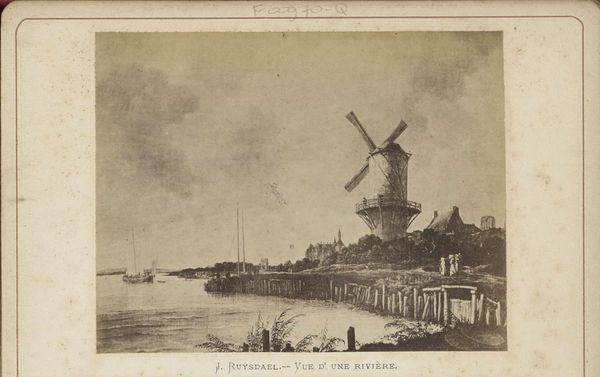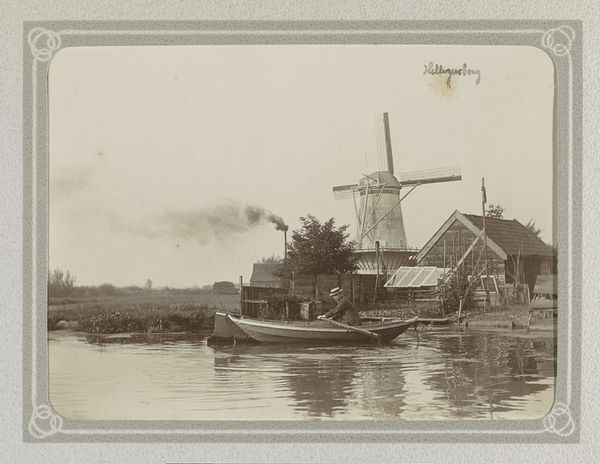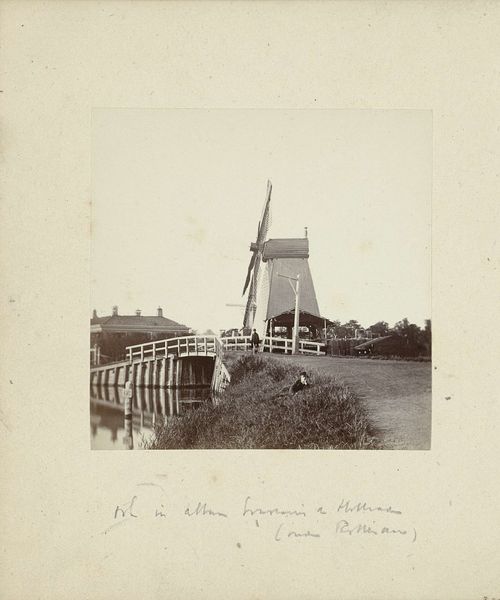
Houtzaagmolen De Haan aan de Kwakerspoel, gezien vanaf de Buitensingel met links het Steenpad en direct links van de molen het gebouw De Keizerskroon c. 1880 - 1900
0:00
0:00
andriesjager
Rijksmuseum
photography, gelatin-silver-print
#
dutch-golden-age
#
landscape
#
photography
#
gelatin-silver-print
Dimensions: height 94 mm, width 135 mm
Copyright: Rijks Museum: Open Domain
Editor: So, this is a photograph titled "Houtzaagmolen De Haan aan de Kwakerspoel, gezien vanaf de Buitensingel met links het Steenpad en direct links van de molen het gebouw De Keizerskroon" by Andries Jager, sometime between 1880 and 1900. It’s a gelatin-silver print. I’m struck by how much industry it manages to capture while still feeling…serene, almost. What’s your take? Curator: It's fascinating, isn't it? Consider the Dutch Golden Age paintings. Jager, through the modern medium of photography, echoes those compositions, yet offers a glimpse into a changing society. The presence of the sawmill speaks to Amsterdam's economic activities. The buildings and waterways also remind us of the vital infrastructure for trade and timber, reflecting its maritime power. How do you see this image interacting with those societal narratives? Editor: I guess I hadn't really connected it to that earlier era so directly. Thinking about the sawmill as a symbol of industry next to these canals definitely adds another layer. The image itself feels like a document, recording this transition from a society based on wind and water power to… well, something more industrialized. Curator: Precisely. The photograph captures a moment in time, illustrating technological advancements that impacted Amsterdam’s physical and economic landscape. How might this image be interpreted in relation to evolving attitudes about environmental resources during that period? Editor: Hmm, I hadn’t thought about it that way. It feels like we’re only just starting to grapple with those ideas of resources and industry. Curator: These images act as more than mere recordings. They spark discussions on progress, its costs, and how societies shape themselves around emerging technologies. The politics of imagery. Editor: I never really thought of photography in this way. It’s made me rethink how images of the past affect the present.
Comments
No comments
Be the first to comment and join the conversation on the ultimate creative platform.
